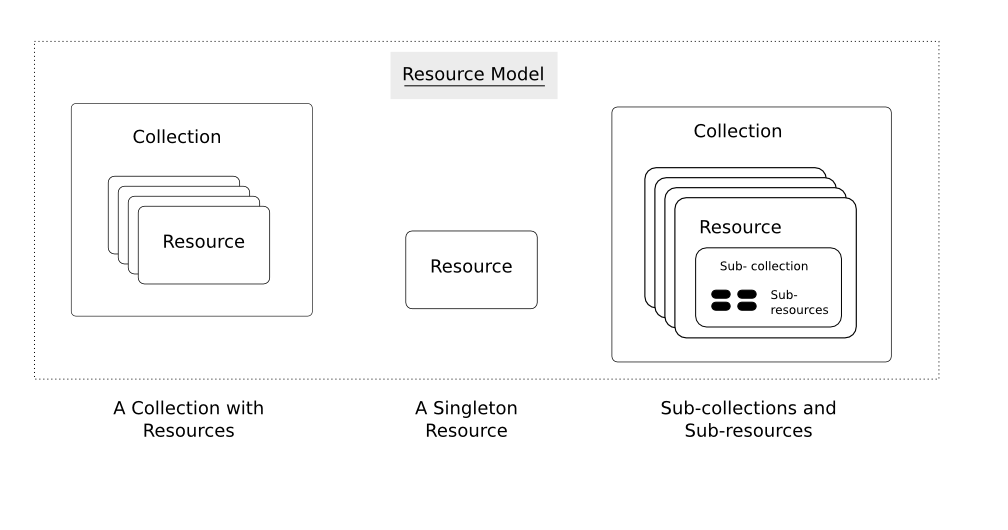Resources
The fundamental concept in any RESTful API is the resource. One of the first steps in developing a RESTful web service is designing the resource model. The resource model identifies and classifies all the resources the client uses to interact with the Server.
Design your API with the API consumer in mind!
Each resource MUST make sense from the perspective of the API consumer. Beware of simply copy your internal model. Do not leak irrelevant implementation details out to your API.
A resource is an object with a type, associated data, relationships to other resources, and a set of methods that operate on it. HTTP verbs are used to manipulate the resources.
Resources can be grouped into collections. Each collection is homogeneous so that it contains only one type of resource, and unordered. Resources can also exist outside any collection. In this case, we refer to these resources as singleton resources. Collections are themselves resources as well.
Collections can exist globally at the top level of an API, but can also be contained inside a single resource. In the latter case, we refer to these collections as sub-collections. Sub-collections are usually used to express some kind of “contained in” relationship. We go into more detail on this in Relationships and Sub-Resources.
The diagram below illustrates the key concepts in a RESTful API.

We call information that describes available resources types, their behavior, and their relationships the resource model of an API. The resource model can be viewed as the RESTful mapping of the application data model.
Find more details in the chapters: